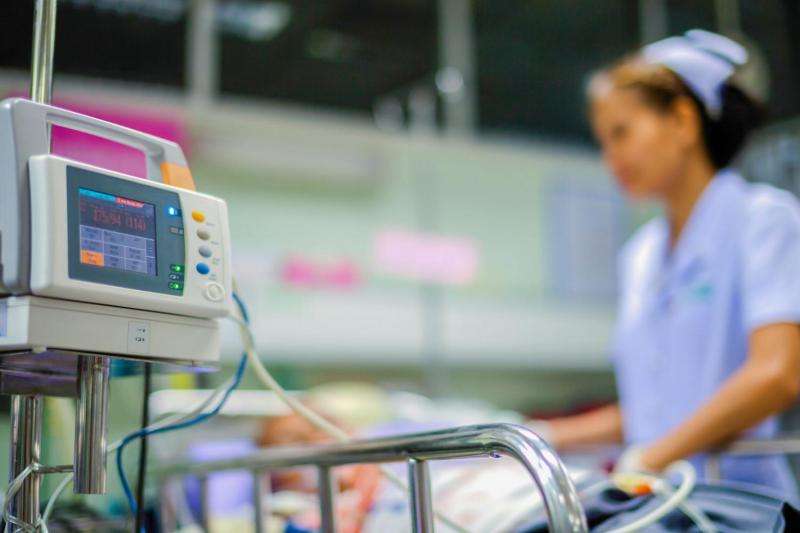Analysing compounds of bacterial origin in breath may help to identify a serious pneumonia-causing pathogen

Ventilator-associated pneumonia is a serious threat to the recovery of patients who are already critically ill and being treated in an intensive care unit (ICU). It is caused by a host of pathogens and diagnosis is difficult and often invasive. Aggressive treatment can lead to antibiotic misuse and ultimately resistance, which only adds to the complexity of treating the condition.
Researchers in China have found that an easy and non-invasive technique for detecting volatile organic compounds (VOCs) in the breath of ICU patients with ventilator-associated pneumonia could be used to identify infection with Acinetobacter baumannii , one of many pneumonia-causing bacteria.
A. baumannii poses a special challenge because, in addition to causing disease, it can harmlessly colonize the lungs. However, it is very difficult for clinicians to distinguish between these two states. What's more, treating a harmless colonization could lead to antibiotic resistance.
The researchers, led by Dr Kejing Ying at the Zhejiang University School of Medicine, tested the feasibility of using VOCs from the breath of patients to detect an A. baumannii 'signature' that could reliably distinguish the presence of the bacterium and its status in the lung (colonization or open infection). A large variety of gaseous molecules can be found in the exhaled human breath. In this case, researchers were interested in particular in VOCs of bacterial origin, and collected and identified them using a technique called mass spectrometry.
The researchers found that they could detect VOCs from bacteria grown in culture, as a necessary control for the system, and from patients' breath. As this was a prospective study, the researchers already knew who among the 60 patients enrolled in the study was positive for A. baumannii and who was not. Interestingly, the team found that A. baumannii grown in culture emitted nine different VOCs, while they detected only eight A. baumannii -related VOCs from patients' breaths. Unexpectedly, only four VOCs were common to both groups, leading the researchers to warn against applying the results from culture tests in clinical practice without a quality check.
The team also investigated to determine if VOCs from patients could be used to differentiate between A. baumannii colonization and infection. They used a statistical tool called 'principal component analysis' to show that the VOCs could be used to discriminate between these two states with a specificity and sensitivity of about percent. While further validation is required, especially when it comes to translating VOCs' culture data into clinical practice, in the future it may be possible to 'smell pneumonia' right at the patient's bedside.

















